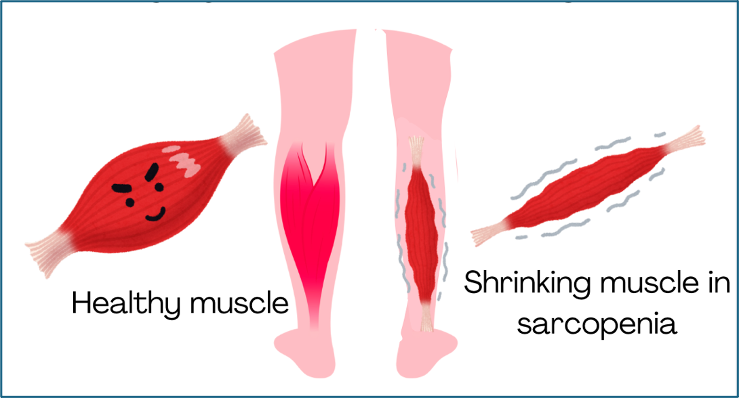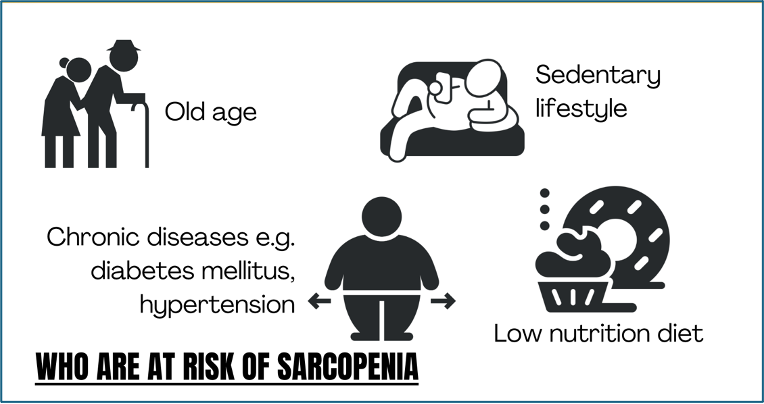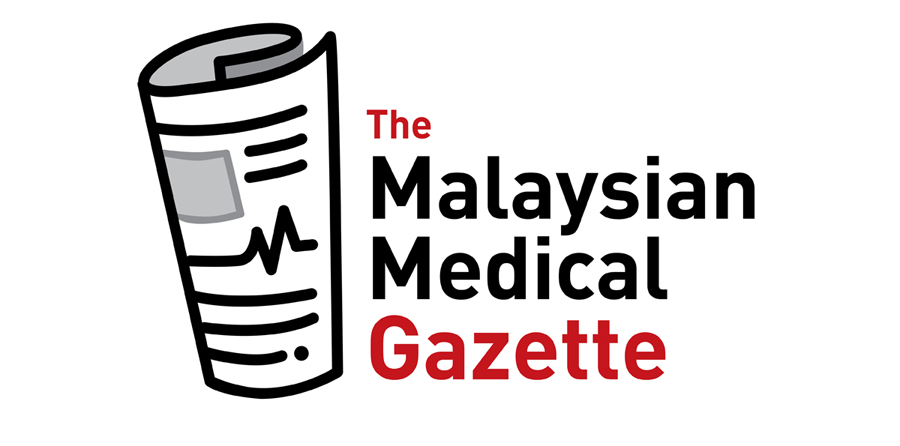Imagine your muscles as a car engine. When you’re young and active, your engine is powerful and runs smoothly. But over time, if you don’t maintain it with the right fuel (nutrition) and regular use (exercise), the engine weakens and breaks down. This is exactly what happens to our muscles as we age—a condition known as sarcopenia.
Sarcopenia is the gradual loss of muscle mass and strength, making everyday activities like climbing stairs, carrying groceries, or even standing up from a chair harder than before.
 Image self-made using Canva
Image self-made using Canva
Have you ever wonder, why does this happen?

Image self-made using Canva
- Lack of Physical Activity: The “Use It or Lose It” Rule
Think of your muscles like a rubber band. If you stretch and use it regularly, it stays strong and flexible. But if you leave it untouched for a long time, it becomes brittle and weak.
A sedentary lifestyle—where you sit for long hours without much movement—causes muscle loss because your body stops maintaining muscles that it thinks you don’t need. Studies show that people who don’t exercise can lose muscle faster, especially after the age of 40.
If you’ve ever had a leg injury and had to use crutches for weeks, you may have noticed that the injured leg looks smaller and weaker than the healthy one. That’s muscle loss from inactivity!
Prevention Tip: Stay active with simple daily exercises like walking, stretching, or lifting light weights. Activities like gardening, household chores, or even playing with your grandchildren help keep muscles engaged.
- Poor Diet: Not Enough “Building Blocks” for Muscles
Imagine you’re trying to build a house. You need bricks, cement, and workers to make it strong. Your muscles also need building materials, mainly protein, vitamins, and minerals. Without enough of these, your body can’t repair or grow new muscle fibers.
Have you ever seen someone who eats mostly junk food and doesn’t get enough protein? They could be bigger in size from the fat accumulation, but they are weaker or frail, even if they are not very old. That’s because their body isn’t getting enough nutrition to maintain muscle health.
Prevention Tip: Eat protein-rich foods like fish, chicken, eggs, tofu, tempeh, beans, and dairy. Our local dishes likeikan bakar, laksa, or satay are great sources of protein.
- Hormonal Changes: The Body’s “Muscle Control Switch” Weakens
Hormones in our body are like the electricity that powers our house. If the electricity is weak, some appliances won’t work properly. As we age, certain hormones that help maintain muscles, like testosterone (in men) and oestrogen (in women), start to decline.
This makes it harder for the body to rebuild and maintain muscle mass, especially after the age of 50. For women, muscle loss can accelerate after menopause. Whereas low testosterone levels can contribute to weakness and fatigue in men.
You probably have come across elderlies who complained that their grip strength weakens. They often find it difficult to open bottle caps or carry shopping bags. This is partly due to hormonal decline.
Prevention Tip: Exercise, especially strength training (like squats or lifting light weights), can stimulate muscle-building hormones and slow down muscle loss.
- Chronic Illnesses and Medications: “Hidden Thieves” of Muscle Strength
Certain long-term health conditions like diabetes, kidney disease, and arthritis can speed up muscle loss. Medications such as steroids, cholesterol-lowering drugs and anti-arrhythmic drugs can also cause muscle weakness as a side effect.
Have you ever noticed that some people who are bedridden due to chronic illnesses become very weak and frail? That’s because their body is losing muscle much faster than normal.
Prevention Tip: Manage chronic diseases properly by following doctor’s advice, staying active, and eating well to support muscle health.
- Ageing: The Unstoppable Factor (But Can Be Managed!)
Ageing is like a car getting older—it naturally loses some of its efficiency. Muscle loss happens to everyone after age 30, but it becomes more noticeable after 60. The good news? You can slow it down!
 Image self-made using Canva
Image self-made using Canva
Make these changes to your lifestyle to keep your body strong for as long as possible:
- Exercise: Strengthen your body – Try light weightlifting or resistance exercises.
- Eat a well-balanced diet: – Add protein-rich foods to your diet. Remove junk food from your diet.
- Move more: Take the stairs, do simple stretching, or walk daily.
Sarcopenia may be a natural part of ageing, but it’s not inevitable. Just like maintaining a house or a car, you need to take care of your muscles daily to keep them strong. By taking small steps now, you can prevent muscle loss and enjoy an active, independent life well into your golden years.
Dr Wan Fatein Nabeila Wan Omar, is a physiologist at the Dept of Basic Medical Sciences, Kulliyyah of Medicine, International Islamic University Malaysia.
References:
- Norshafarina, S., Noor Ibrahim, Suzana, S., Hasnan, A., Zahara, M., & Zaitun, Y. (2013). Sarcopenia and Its Impact on Health: Do They Have Significant Associations? (Sarkopenia dan Kesannya ke Atas Kesihatan: Adakah Terdapat Sebarang Hubung Kait?).Sains Malaysiana, 42(9), 1345–1355. http://www.ukm.edu.my/jsm/pdf_files/SM-PDF-42-9-2013/20%20S.K.%20Norshafarina.pdf
- Yang, L., Smith, L., & Hamer, M. (2018). Gender-specific risk factors for incident sarcopenia: 8-year follow-up of the English longitudinal study of ageing.Journal of Epidemiology and Community Health, 73(1), 86–88. https://doi.org/10.1136/jech-2018-211258
- Yuan, S., & Larsson, S. C. (2023). Epidemiology of sarcopenia: Prevalence, risk factors, and consequences.Metabolism: clinical and experimental, 144, 155533. https://doi.org/10.1016/j.metabol.2023.155533
